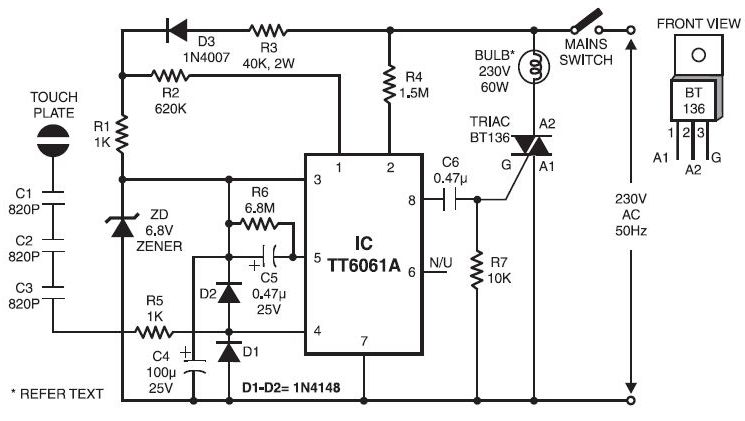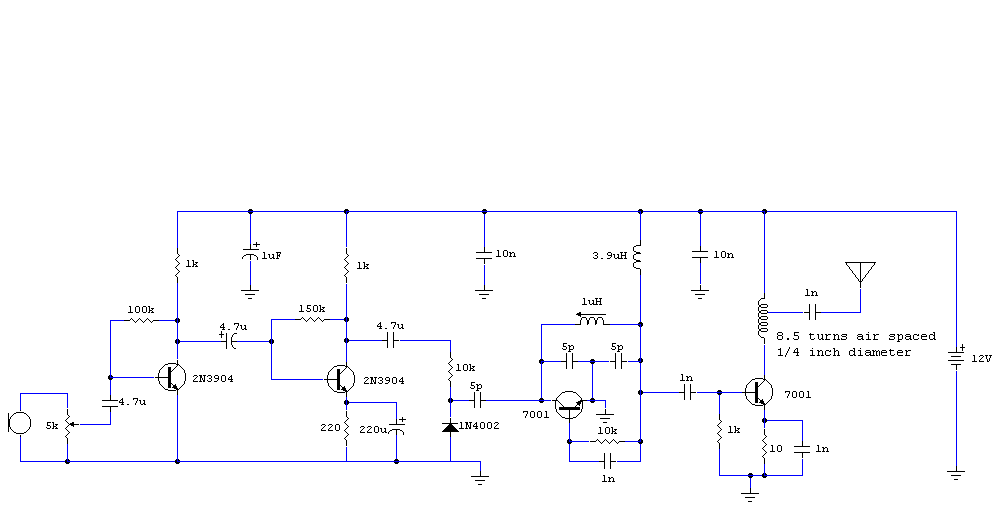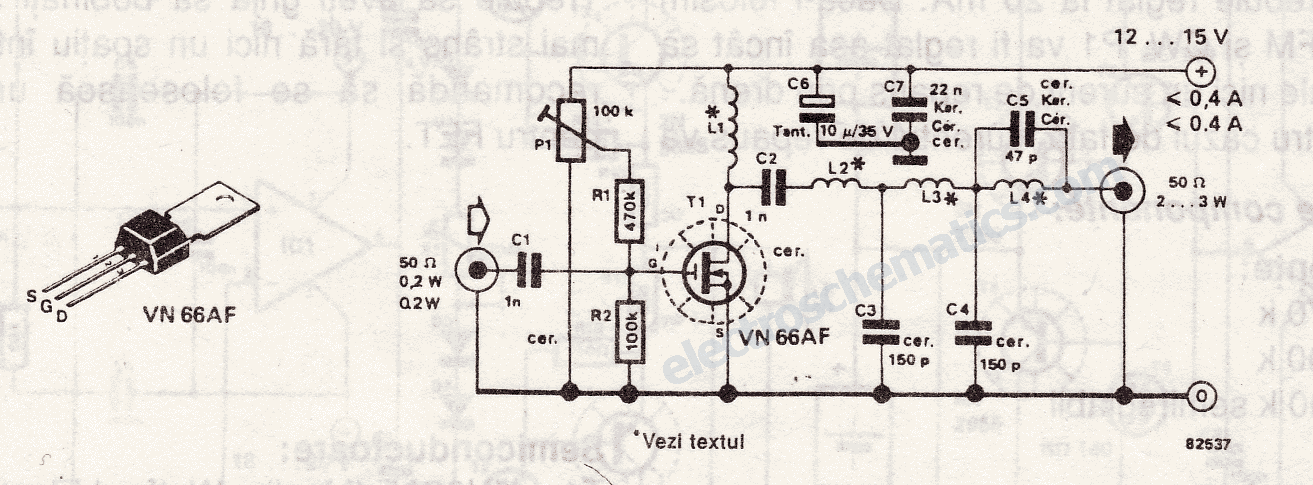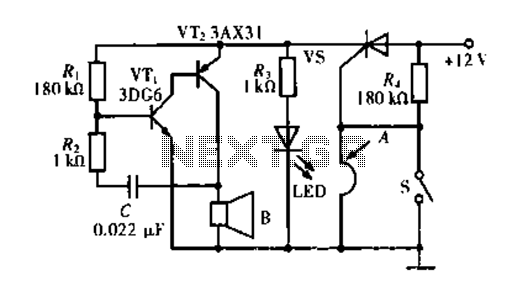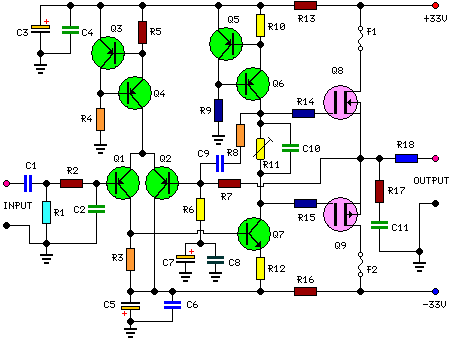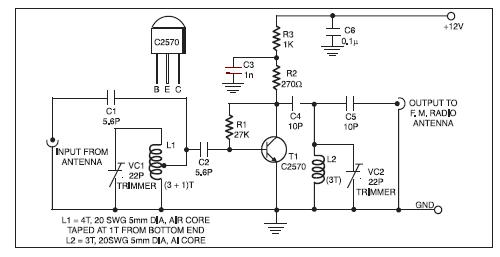
40kHZ ultrasonic transmitter circuit diagram
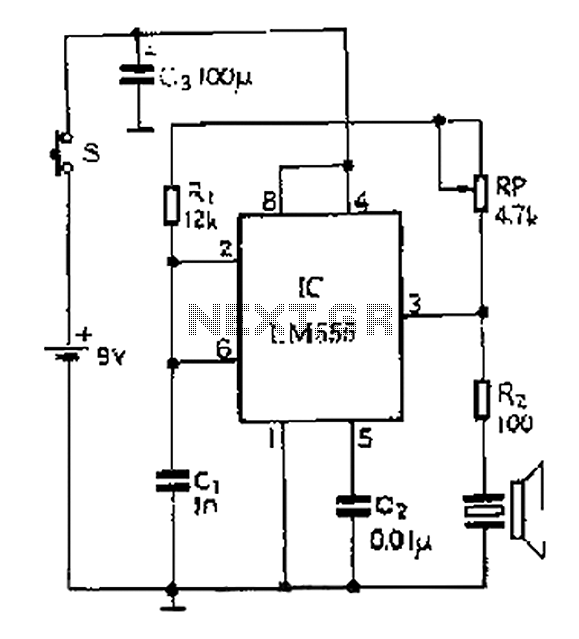
A 40 kHz ultrasonic transmitter circuit utilizes the LM555 timer as a time base circuit along with external components to create a 40 kHz multivibrator. The resistance of the adjustable resistor RP can modify the oscillation frequency. The output from the LM555 drives an ultrasonic transducer (T40-16) to emit ultrasonic signals. This circuit is straightforward and operates with a voltage of 9V and a working current of 40 to 50 mA, capable of transmitting ultrasonic signals over distances greater than 8 meters. The LM555 timer can be replaced with the NE555, yielding the same performance.
The ultrasonic transmitter circuit operates at a frequency of 40 kHz, which is within the ultrasonic range, allowing for various applications such as distance measurement, object detection, and communication. The core of the circuit is the LM555 timer configured in astable mode to generate a continuous square wave output. The frequency of oscillation can be adjusted by varying the resistance of the potentiometer RP, which affects the timing capacitors and resistors in the circuit.
The LM555 output drives the ultrasonic transducer T40-16, which converts the electrical signals into ultrasonic sound waves. This transducer is specifically designed for ultrasonic applications, ensuring efficient conversion and transmission of the generated signals. The circuit is powered by a 9V supply, which is common for low-power electronic devices, ensuring ease of integration into various systems.
The current consumption of 40 to 50 mA indicates that the circuit is designed for low power applications, making it suitable for battery-operated devices. The ability to transmit ultrasonic signals over distances greater than 8 meters enhances its utility in various scenarios, such as in robotics for obstacle avoidance or in industrial applications for non-destructive testing.
In terms of component selection, the LM555 timer is a versatile and widely used component in timer, delay, pulse generation, and oscillator applications. The availability of the NE555 as a direct replacement ensures that the circuit can be easily maintained or modified without compromising performance. Overall, this ultrasonic transmitter circuit exemplifies simplicity and effectiveness in generating ultrasonic signals for a range of applications.40kHZ ultrasonic transmitter circuit of five, by the time base circuit LM555 and the external components 40kHZ multivibrator circuit, the resistance adjusting resistor RP can c hange the oscillation frequency. 3 feet from the LM555 output drives ultrasonic transducer T40-16, so as to emit ultrasonic signals. Circuit is simple and easy system. Circuit voltage of 9V, working current 40 ~ 50mA. Transmitting ultrasonic signals greater than 8m. LM555 NE555 direct replacement available, the effect is the same.
The ultrasonic transmitter circuit operates at a frequency of 40 kHz, which is within the ultrasonic range, allowing for various applications such as distance measurement, object detection, and communication. The core of the circuit is the LM555 timer configured in astable mode to generate a continuous square wave output. The frequency of oscillation can be adjusted by varying the resistance of the potentiometer RP, which affects the timing capacitors and resistors in the circuit.
The LM555 output drives the ultrasonic transducer T40-16, which converts the electrical signals into ultrasonic sound waves. This transducer is specifically designed for ultrasonic applications, ensuring efficient conversion and transmission of the generated signals. The circuit is powered by a 9V supply, which is common for low-power electronic devices, ensuring ease of integration into various systems.
The current consumption of 40 to 50 mA indicates that the circuit is designed for low power applications, making it suitable for battery-operated devices. The ability to transmit ultrasonic signals over distances greater than 8 meters enhances its utility in various scenarios, such as in robotics for obstacle avoidance or in industrial applications for non-destructive testing.
In terms of component selection, the LM555 timer is a versatile and widely used component in timer, delay, pulse generation, and oscillator applications. The availability of the NE555 as a direct replacement ensures that the circuit can be easily maintained or modified without compromising performance. Overall, this ultrasonic transmitter circuit exemplifies simplicity and effectiveness in generating ultrasonic signals for a range of applications.40kHZ ultrasonic transmitter circuit of five, by the time base circuit LM555 and the external components 40kHZ multivibrator circuit, the resistance adjusting resistor RP can c hange the oscillation frequency. 3 feet from the LM555 output drives ultrasonic transducer T40-16, so as to emit ultrasonic signals. Circuit is simple and easy system. Circuit voltage of 9V, working current 40 ~ 50mA. Transmitting ultrasonic signals greater than 8m. LM555 NE555 direct replacement available, the effect is the same.
